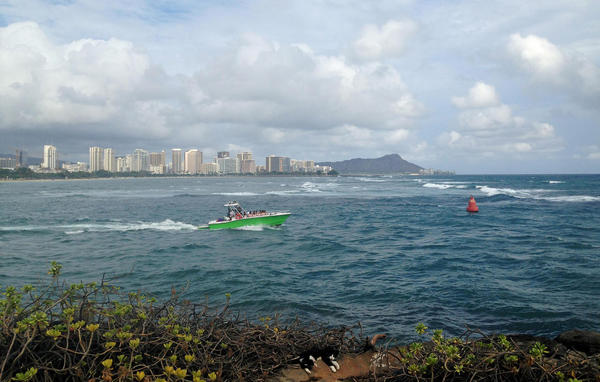-
Tips for becoming a good boxer - November 6, 2020
-
7 expert tips for making your hens night a memorable one - November 6, 2020
-
5 reasons to host your Christmas party on a cruise boat - November 6, 2020
-
What to do when you’re charged with a crime - November 6, 2020
-
Should you get one or multiple dogs? Here’s all you need to know - November 3, 2020
-
A Guide: How to Build Your Very Own Magic Mirror - February 14, 2019
-
Our Top Inspirational Baseball Stars - November 24, 2018
-
Five Tech Tools That Will Help You Turn Your Blog into a Business - November 24, 2018
-
How to Indulge on Vacation without Expanding Your Waist - November 9, 2018
-
5 Strategies for Businesses to Appeal to Today’s Increasingly Mobile-Crazed Customers - November 9, 2018
Sewage spill shuts down popular Hawaiian beach
Honolulu city officials are clarifying the reasons that Waikiki Beach remains closed today. While the 500,000 gallons of untreated sewage that spilled into the ocean may seem shocking, in 2006, during a stretch of rain that lasted 40 days, an estimated 48 million gallons of wastewater was pushed through the Ala Wai Canal near Waikiki, which empties into Bowls.
Advertisement
“I saw a lot of water that smelled bad and basically it was over the road,” Steve Casar, of the Waikiki Yacht Club, told KHNL. Honolulu Emergency Services spokeswoman Shayne Enright said there’s a risk of infection.
“Would you rather swim with human feces or possibly with animal feces?” “We don’t know right now what is in the water”, she said.
Every beach on the island is under a “brown water advisory” issued by the Department of Health, noting that waters might be contaminated.
Jesse Broder Van Dyke, spokesman for Mayor Kirk Caldwell, said the results from the first round of testing won’t be released until Wednesday, when an announcement will be made about reopening the beaches.
The Department of Environmental Services has sanitized the portion of the park affected by the spill today and it will be safe to open tomorrow, according to a city news release.
Lifeguards and police are present to also warn people to stay out of the water because of the contamination. That storm water flowed into the city’s drainage system and led to the backup.
Kahikina said the storm water entered the sewage system as leaves and debris clogged the storm drains.
Ms Kahikina said witnesses reported people were opening manhole covers to let the storm water drain into the sewage system, which was unable to cope with the volume of water.
The sewage spill came as moisture associated with Tropical Depression Kilo dumped heavy rain on the islands.
Advertisement
Rain and thunderstorms have prompted flash flooding warnings across Hawaii. “It’s an above-average year already, and we’re still just in August”, he added. Six of those storms reached super-typhoon status, which means they had maximum sustained winds over 150 miles per hour .





























